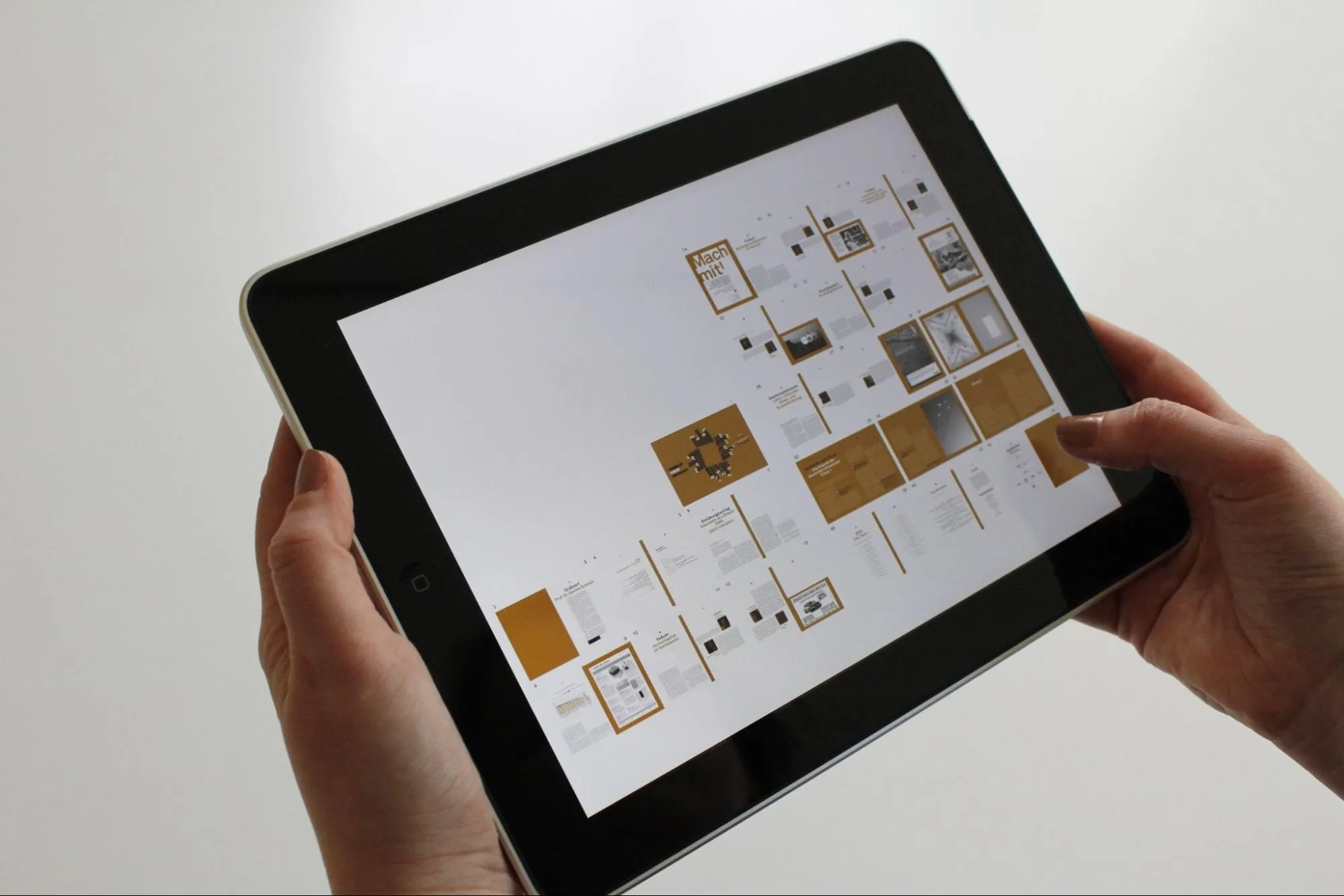What Do the Best Media Kits Have in Common?
To uncover the secret ingredient that all the best media kits share, we’ve gathered insights from twelve industry professionals, ranging from CEOs to marketing specialists. They’ve shared their wisdom on everything from “Emphasizing Comprehensive and Structured Information” to “Including High-Resolution Images”. Dive into these expert tips to create a media kit that stands out.
- Emphasizing Comprehensive and Structured Information
- Presenting Brand’s Unique Opportunity Clearly
- Including a Well-Defined Process
- Showcasing Awards and Appreciation
- Crafting Compelling and Concise Storytelling
- Designing a Visually Appealing Layout
- Creating the “Wow” Factor
- Crafting an Effective Boilerplate
- Designing Targeted Media Kits
- Telling a Compelling Brand Story
- Providing Comprehensive and Up-to-Date Information
- Including High-Resolution Images
Emphasizing Comprehensive and Structured Information
As a PR expert, one common element that all the best media kits share is comprehensive and well-structured information. A top-notch media kit should provide clear, concise, and up-to-date information about the company, its products or services, key team members, recent press releases, high-resolution images, and contact details. This information needs to be organized in a way that’s easy for journalists, bloggers, and other media representatives to navigate and understand. The goal of a media kit is to make the job of the media easier by providing them with everything they need in one place, and the best media kits achieve this by prioritizing clarity, completeness, and ease of use.
 Katie White
Katie White
Content Marketing Manager, Centime
Presenting Brand’s Unique Opportunity Clearly
A well-designed press kit is good, but in my opinion, it’s more important to convey information in an easy-to-digest, thoughtful way. This is because most, if not all, journalists are quite busy, and they wouldn’t want to dig through a media kit to find a quote or a statistic. From this, I can say that the best media kits present the unique opportunity for a brand efficiently, clearly, and concisely. Take, for example, Entrepreneur.com’s media kit: a potential media buyer may easily understand what the site is about, what makes the audience special or valuable, and how precisely advertising can reach that audience after only a few pages of browsing.
 Samantha Hawrylack
Samantha Hawrylack
CEO, SJ Digital Solutions LLC
Including a Well-Defined Process
One key is the inclusion of a clear and well-defined process. Whether you are a content creator, marketer, or brand, having a documented process in your media kit showcases your professionalism and commitment to delivering consistent results.
This process could include steps like thorough research, content creation or campaign planning, target audience analysis, metrics tracking, and reporting. By highlighting your systematic approach, potential clients gain confidence in your abilities and understand the value you bring to the table.
 Matias Rodsevich
Matias Rodsevich
CEO, PRLab
Showcasing Awards and Appreciation
The media kits contain a lot of things that help the company showcase its reputation and monopoly in the market. I have seen a lot of media kits, and one thing that I noticed the most was the awards and appreciation section. Companies list a lot in their media kits like press releases, high-quality images, testimonials, areas of work, references, social presence, and more, but awards and appreciation are the most common yet effective sections to draw readers’ attention. The reason why most enterprises give space to this section is because it helps them to show people their achievements. Awards and appreciation also create a sense of credibility and tell about the company’s extraordinary capabilities that set it apart from others. In this section, it is often shown that all the awards and appreciation have been presented to the company by some established personalities or institutions to show brand visibility.
 Faizan Khan
Faizan Khan
Public Relations and Content Marketing Specialist, Ubuy UK
Crafting Compelling and Concise Storytelling
While media kits can vary depending on the specific organization or industry, there is one common element that tends to be present in the best media kits: compelling and concise storytelling. The best media kits effectively tell a cohesive and engaging story about the organization or brand. This storytelling element helps capture the attention of media professionals and provides them with a clear understanding of the brand’s value proposition, unique selling points, and overall narrative. By crafting a compelling story, media kits can leave a lasting impression and increase the likelihood of media coverage and partnerships. One of the key aspects that contribute to effective storytelling in a media kit is clear and concise messaging. Media kits should convey the organization’s core message and value proposition in a concise and easily understandable manner. Avoid jargon or overly complex language. Instead, focus on communicating the essence of the brand.
 Georgi Todorov
Georgi Todorov
Founder, ThriveMyWay
Designing a Visually Appealing Layout
One thing that all the best media kits have in common is a visually appealing, professionally designed layout. They are always visually appealing and professionally designed to capture attention and reflect the brand’s commitment to quality and attention to detail. This sets the stage for a positive impression and increases the likelihood of media professionals engaging with the content. They are also well-organized and easy to navigate, with clear sections covering topics like products or services, company profiles, and direct contact information. Another thing that stands out in the best media kit is the convenient format for the recipient, whether it’s a downloadable PDF or a dedicated web page.
 Inemesit Ukpanah
Inemesit Ukpanah
Digital PR Specialist, GreenMatch
Creating the “Wow” Factor
All the best media kits have one thing in common: they’re like a party with a red carpet, a DJ spinning the hottest tracks, and free tacos. Okay, maybe not the tacos, but they’re equally enticing. What’s the secret sauce? It’s all about the “wow” factor. The best media kits grab attention and leave a lasting impression. They showcase eye-catching visuals, captivating storytelling, and irresistible data. Think of it as a virtual dating profile, but for your brand. Include mind-blowing statistics and real-life success stories that make heads turn and jaws drop. Whether it’s a jaw-dropping growth percentage or a jaw-dropping celebrity endorsement, these juicy tidbits create buzz and demand. So, sprinkle some razzle-dazzle, dazzle ’em with data, and watch your media kit become the talk of the town!
 Himanshu Sharma
Himanshu Sharma
CEO and Founder, Academy of Digital Marketing
Crafting an Effective Boilerplate
A boilerplate is a bite-sized version of an “About Us” section that you cannot afford to miss when disseminating a media kit. As in the main body of your press release, your boilerplate should be thorough, yet concise, and needless to say, should be fact-checked.
A boilerplate is a public relations tool in itself and should, therefore, be clear, captivating, and compelling. Your easiest reference when writing an effective boilerplate is its value, as significant as the key elements in your written material, and its placement at the end of your press release.
Given this, imagine capturing the readers’ attention from your headline through the main body and leading them to see more about your organization by indicating: why, what, when, where, and how in your boilerplate. Take into consideration that journalists’ pacing is always based on delivering time-sensitive news. So, instead of attaching several backgrounders to your lead story, craft a top-notch boilerplate.
 Tristan Harris
Tristan Harris
Demand Generation Senior Marketing Manager, Thrive Digital Marketing Agency
Designing Targeted Media Kits
The best media kits have one thing in common: they are targeted. They are specifically designed to appeal to the journalists and bloggers who are most likely to write about the company or product.
To achieve this, the best media kits include the following elements:
A clear and concise overview of the company or product. This should include the company’s mission, products or services, and target market.
A strong executive summary. This should highlight the key points of the media kit and explain why the company or product is newsworthy.
High-quality visuals. Images and videos can help to break up the text and make the media kit more visually appealing.
Testimonials from customers or partners. Testimonials can help to build trust and credibility with journalists.
A call to action. The media kit should include a clear call to action, such as inviting journalists to contact the company for more information.
 Brenton Thomas
Brenton Thomas
CEO, Twibi
Telling a Compelling Brand Story
One commonality among the best media kits is the presence of clear, concise, and compelling brand storytelling. This goes beyond just providing basic company information. It includes sharing the brand’s unique value proposition, its mission, its journey, and what sets it apart from competitors.
The brand story in the media kit should be engaging and authentic, crafted in a way that resonates with the target audience, whether it be potential partners, investors, or media outlets. An impactful brand story can leave a lasting impression, and it often serves as the heart of a successful media kit.
 Lukasz Zelezny
Lukasz Zelezny
SEO Consultant, SEO Consultant London
Providing Comprehensive and Up-to-Date Information
One thing that all the best media kits have in common is the inclusion of comprehensive and up-to-date information. A media kit serves as a promotional tool to provide journalists, influencers, and other media professionals with essential information about a company or brand. The best media kits include key details such as a concise company overview, recent press releases, high-quality visuals, product/service information, executive bios, contact details, and relevant statistics or data. By presenting this information in a well-organized and visually appealing manner, media kits effectively convey the necessary information and make it easy for recipients to find the information they need to create compelling stories or coverage.
 Brian Clark
Brian Clark
Founder, United Medical Education
Including High-Resolution Images
One of the most important things to include in a media kit is high-resolution images. Visuals can tell your story much better than words. There are a lot of different images you’ll find in a media kit. A critical type is your logo. You have to include all variants of your logo. There are also headshots in a media kit. The best practice is to add headshots of all your executives. Lastly, you have to add images of your products.
 Perry Zheng
Perry Zheng
Founder and CEO, Pallas
Submit Your Answer
Would you like to submit an alternate answer to the question, “What’s one thing that all the best media kits have in common?”
